In Seattle, a protest for George Floyd, and for Black America
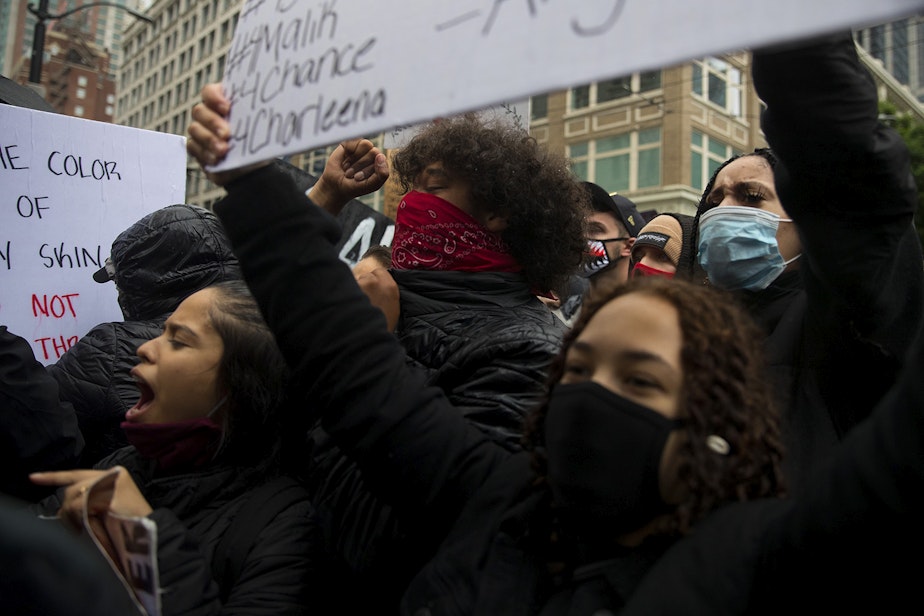
Thunder, be damned, and the pandemic, too.
On Saturday, thousands of protesters took to downtown Seattle over the killings of Black people in America.
Black Americans killed by police, like George Floyd, the 46-year-old man in Minneapolis who died when a cop pressed his knee into his neck. Floyd had, allegedly, according to a teenage convenience store clerk, paid for a pack of cigarettes with a counterfeit $20 bill.
Black Americans killed by white men in the South, as Ahmaud Arbery was, arrests coming 74 days after his death, because national outrage became too deafening for local officials to ignore.
Black Americans dying disproportionately from the coronavirus, a death toll that has been likened to a genocide.
And then the everyday humiliations and threats to Black Americans, like when Amy Cooper, a white woman in New York City, called 911 on Christian Cooper, a Black man, seemingly to punish him for asking her to leash her dog.
Sponsored
The list grows, and each hit results in rage and pain, but sometimes just numbness, because anger is exhausting.
On Saturday, in Seattle and across America, the response was collective anger.
Writing for The Los Angeles Times, basketball legend Kareem Abdul-Jabbar wrote of the response to George Floyd's death: “If you're black, you probably leapt to your feet, cursed, maybe threw something (certainly wanted to throw something), while shouting, “Not @#$%! again!”
The City of Seattle, in tweets and press releases, described what happened on Saturday as two protests: The one earlier in the day was peaceful, led by Black activists, and was usurped by violence.
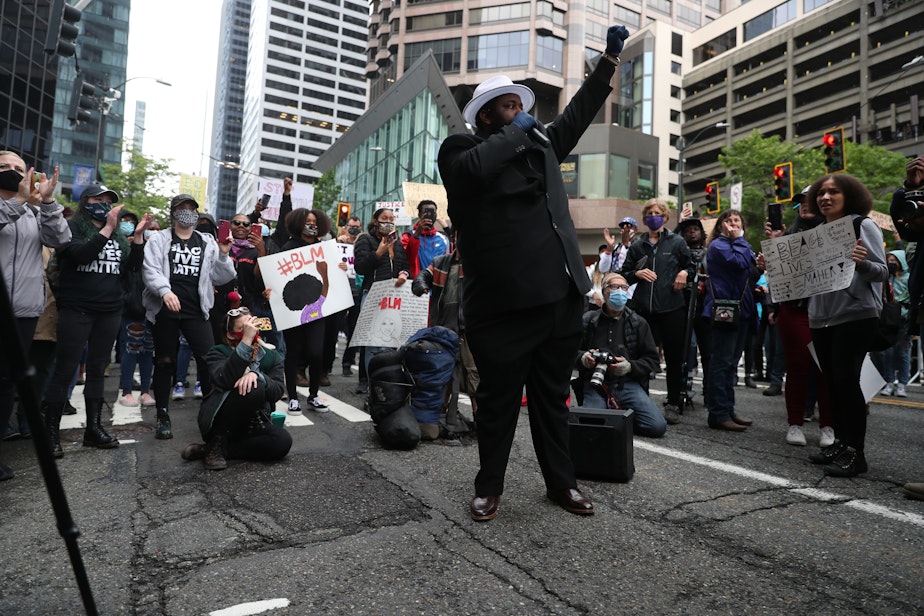
Around 2:45 p.m., young, white men came pouring from around every street corner. Young Black protesters were there, too, and as the protest shifted in tone, Black organizers shouted, “White people to the front! Stand in front of a Black person!”
Protesters walked onto Interstate 5, shutting down the major highway. Two police cars were burned; a child sprayed with mace; Molotov cocktails thrown; community members and cops injured. And in a baffling development, two AR-15 rifles were stolen out of police cars. One of those cop cars was then torched.
Plumes of black smoke rose from downtown Seattle. The air was hot, despite the rain, and smelled of burning magnesium, from the nonstop flash bangs, tinged with body odor. Police shoved protesters, and unleashed clouds of tear gas. Armored vehicles rolled through the streets.
Sponsored
Twenty-seven people would be arrested.
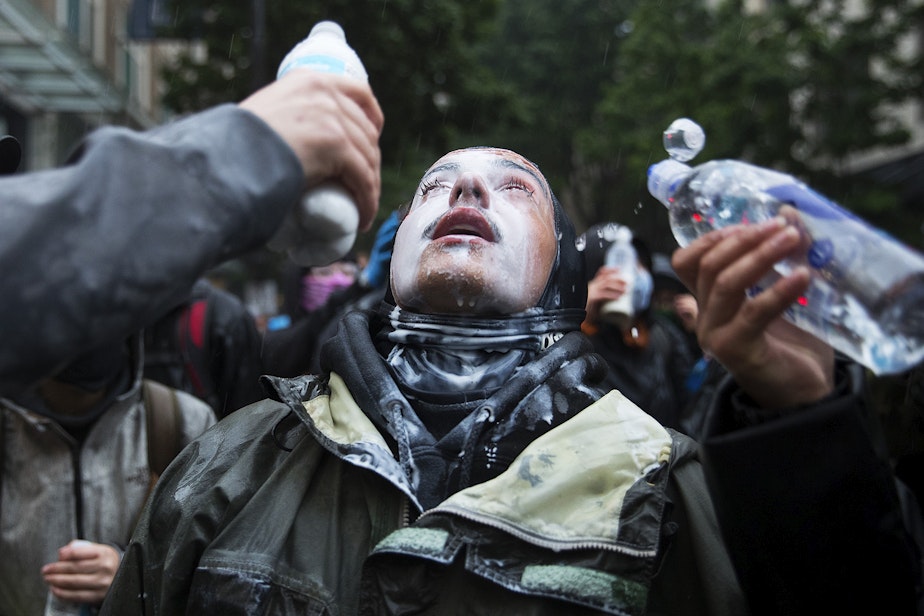
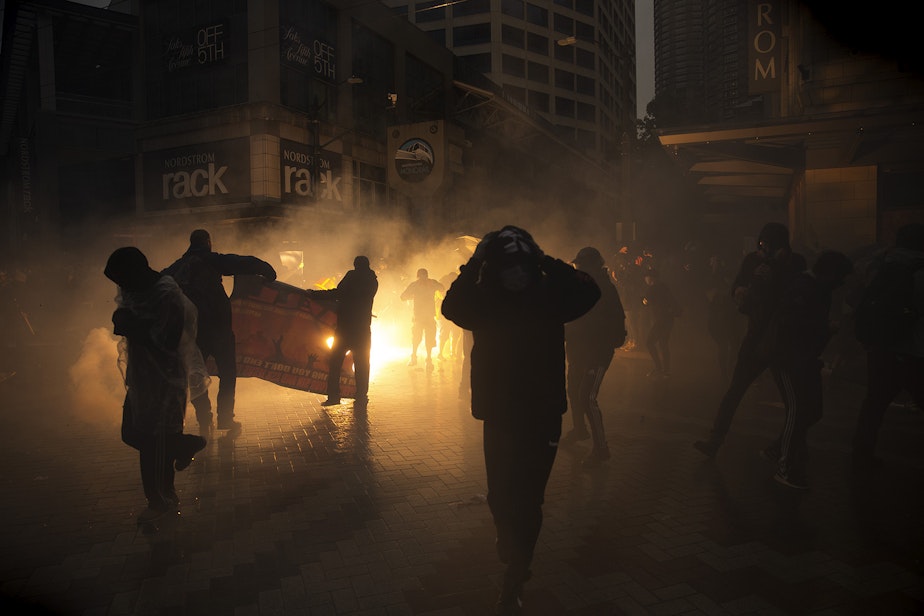
At 4:46 p.m. Mayor Jenny Durkan set a mandatory, citywide curfew for 5 p.m., giving folks downtown 14 minutes to leave.
Sponsored
Half an hour after that, Gov. Jay Inslee announced that 200 unarmed members of the National Guard would head to Seattle to assist with crowd management and traffic.
And then at 6 p.m., Durkan addressed the city.
"It is clear that there was a large number of people who came to protest peacefully,” she said. “That organizers like Andre Taylor and others were able to speak. The crowd was able to march, and they maintained themselves very peacefully.”
Unmentioned was that Andre Taylor's own brother, Che Taylor, was killed by a Seattle police officer in 2016. Che Taylor, like Floyd, was 46 years old.
The officer later said that Che Taylor appeared to be reaching down for a gun, even though the basic physics of that claim have been called into question. An inquest jury said they believed that Che Taylor posed a threat to the officer, but also that he obeyed police orders.
Sponsored
Andre Taylor founded Not This Time after his brother's death.
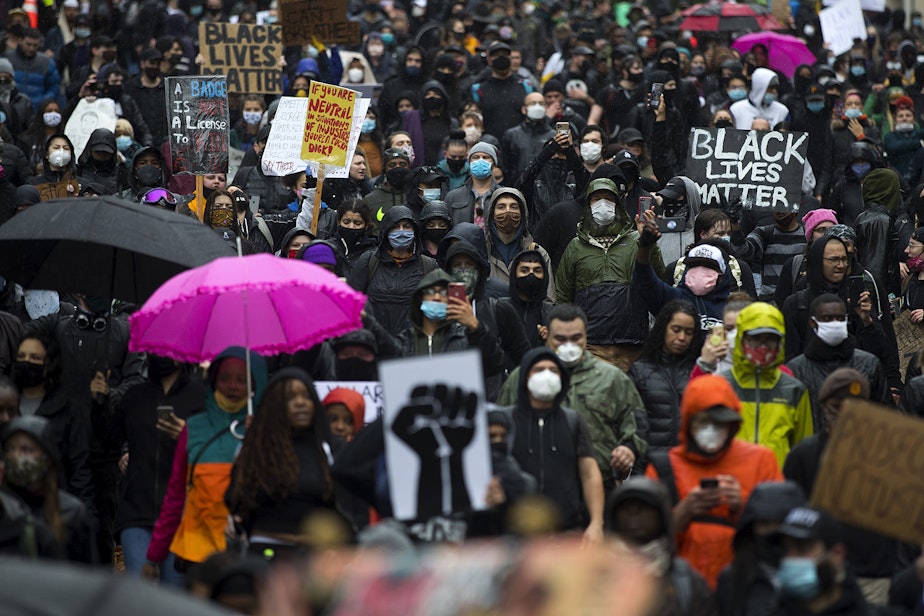
Earlier on Saturday, Andre Taylor said it was important for people to express their anger over Floyd's death and the police action.
"It was disgusting, the cavalier attitude the officer had with his hands in his pockets," Taylor said, referring to the police officer who kneeled on Floyd's neck.
"It was like he was saying, 'Eff the cameras. I'm going to show you as a white police officer what I can do to an unarmed black man and there will be no recourse,'" Taylor said.
"What's the next step? Well, we lead the rest of the country: When we see incidents like this in our cities, here in Washington state, that we make sure that people are convicted for unjustified homicide."
A criminal complaint against Chauvin says he kneeled on Floyd's neck for 8 minutes, 46 seconds – even after Floyd stopped breathing.
In a statement to her officers on Friday, Seattle Police Chief Carmen Best called video of the Floyd incident "disappointing, and infuriating." She said it was troubling that officers stood by while Floyd called for help.
"As a police officer, you have a sworn duty to uphold the law and do what is right. We prioritize the sanctity of life in every situation," Best said.
"If you see a co-worker doing something that is unsafe, out of policy, unacceptable, or illegal, you need to act. This goes beyond reporting. If someone's life is unnecessarily in danger, it is your responsibility to intervene."
But again, unmentioned, is that Seattle remains under federal supervision because of overly aggressive policing.
In his LA Times essay, Abdul-Jabbar said for all the good intentions and peaceful protests, America is not moving the needle.
"I don't want to see stores looted or even buildings burn," he wrote. "But African Americans have been living in a burning building for many years, choking on the smoke as the flames burn closer and closer. Racism in America is like dust in the air. It seems invisible — even if you're choking on it — until you let the sun in. Then you see it's everywhere."
KUOW's Casey Martin and Megan Farmer contributed reporting from downtown Seattle.


